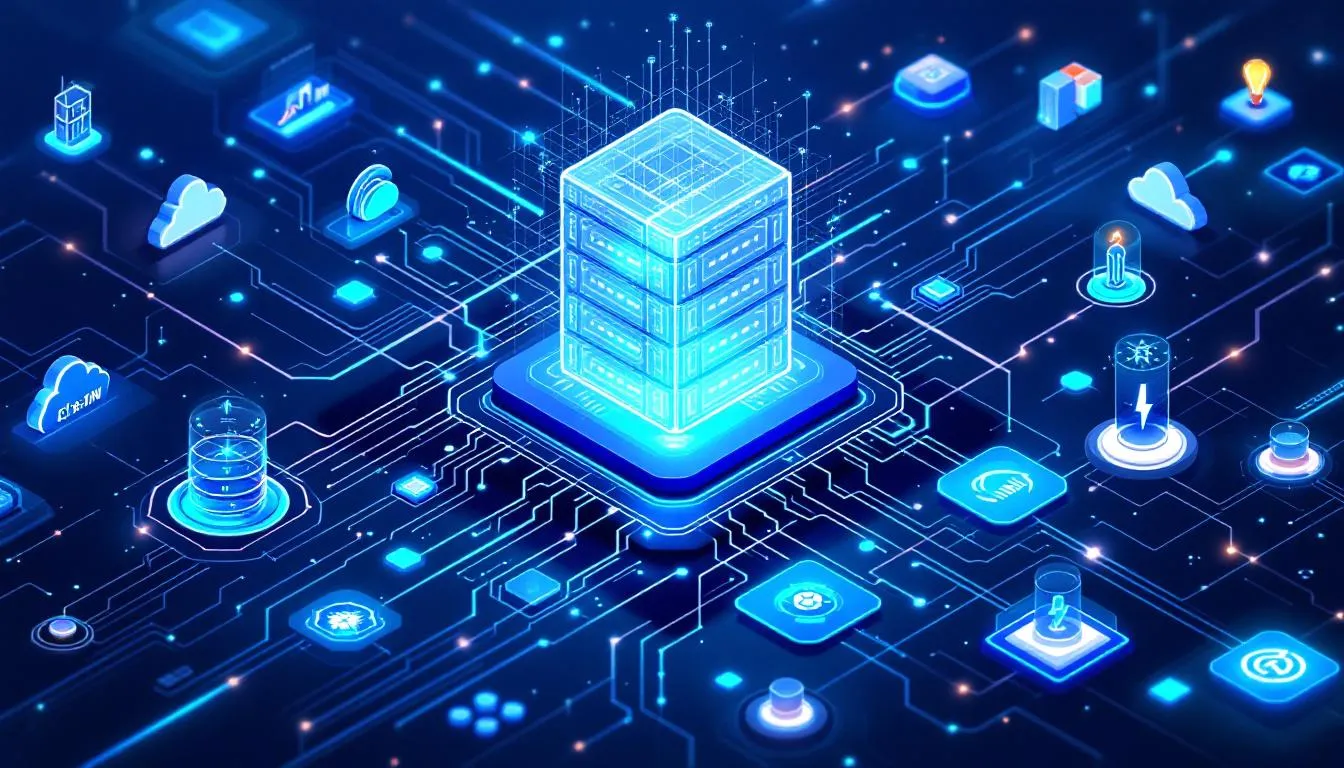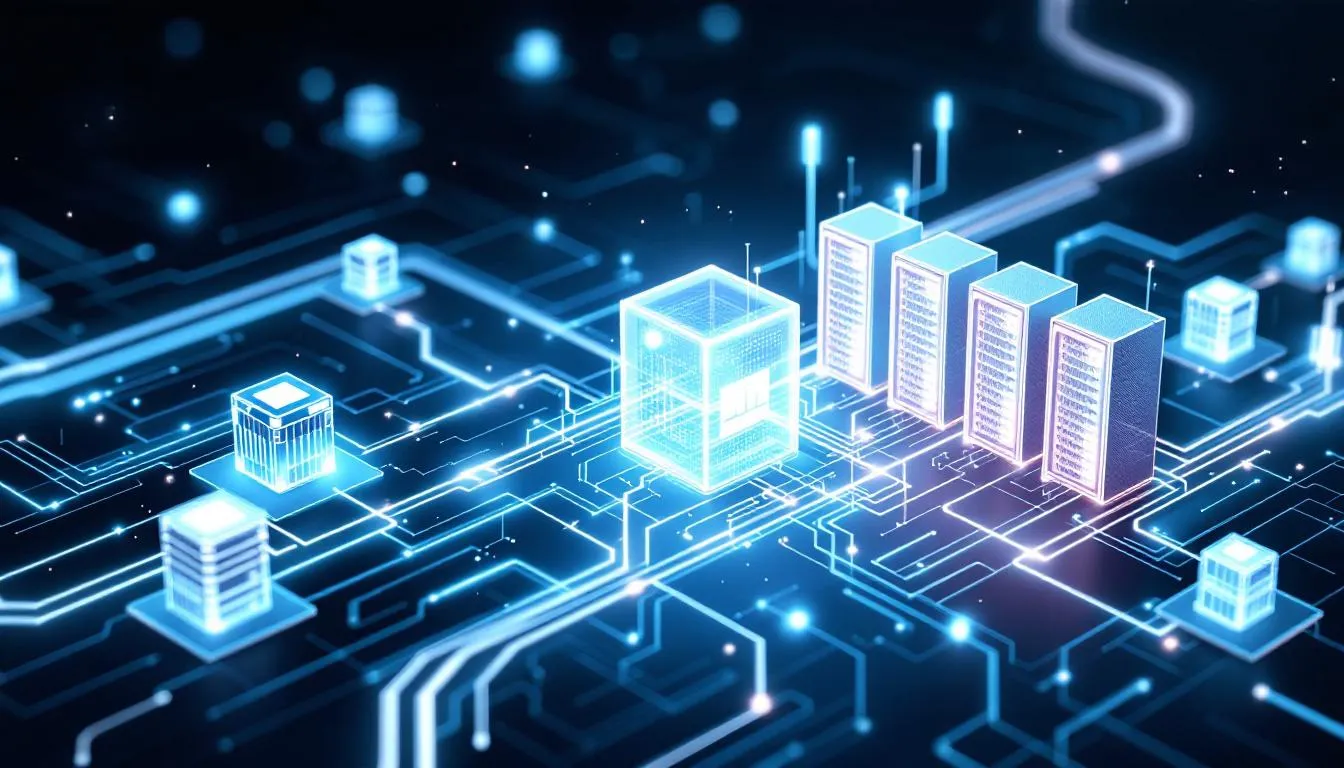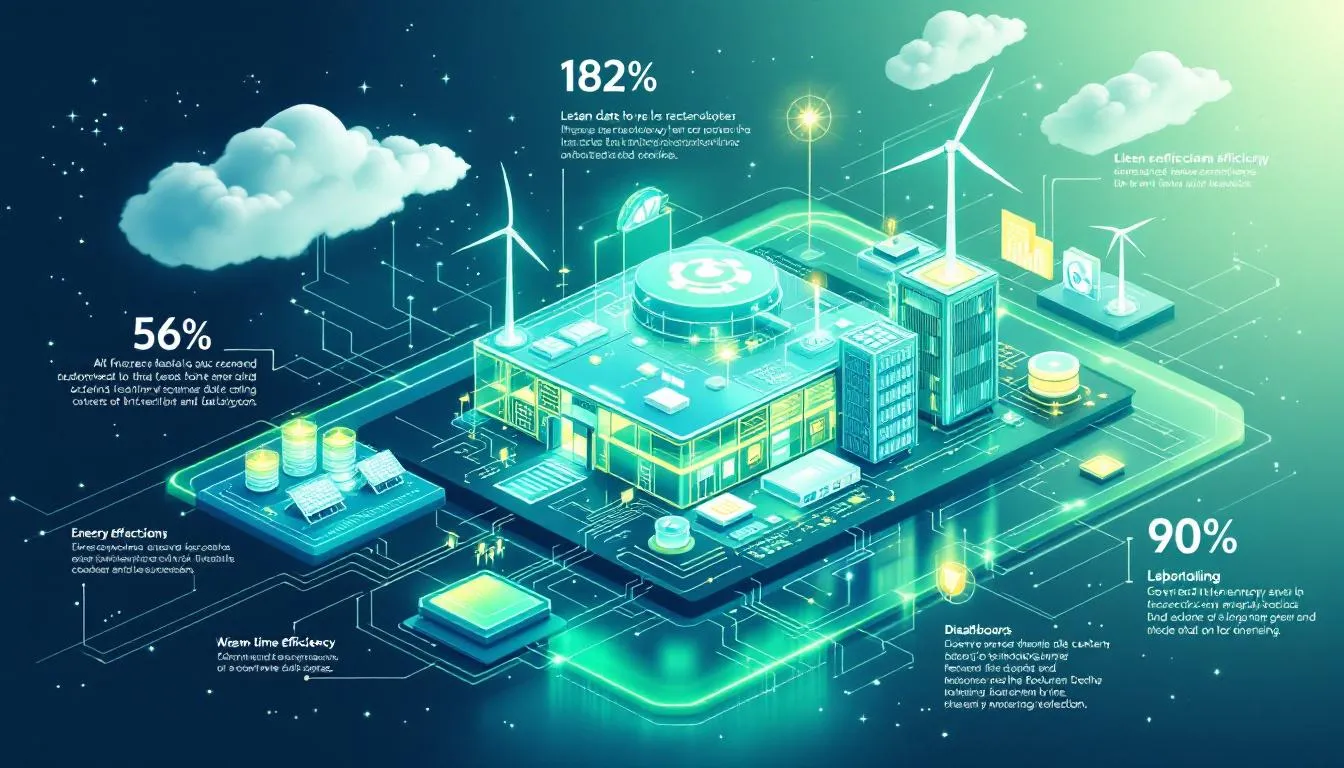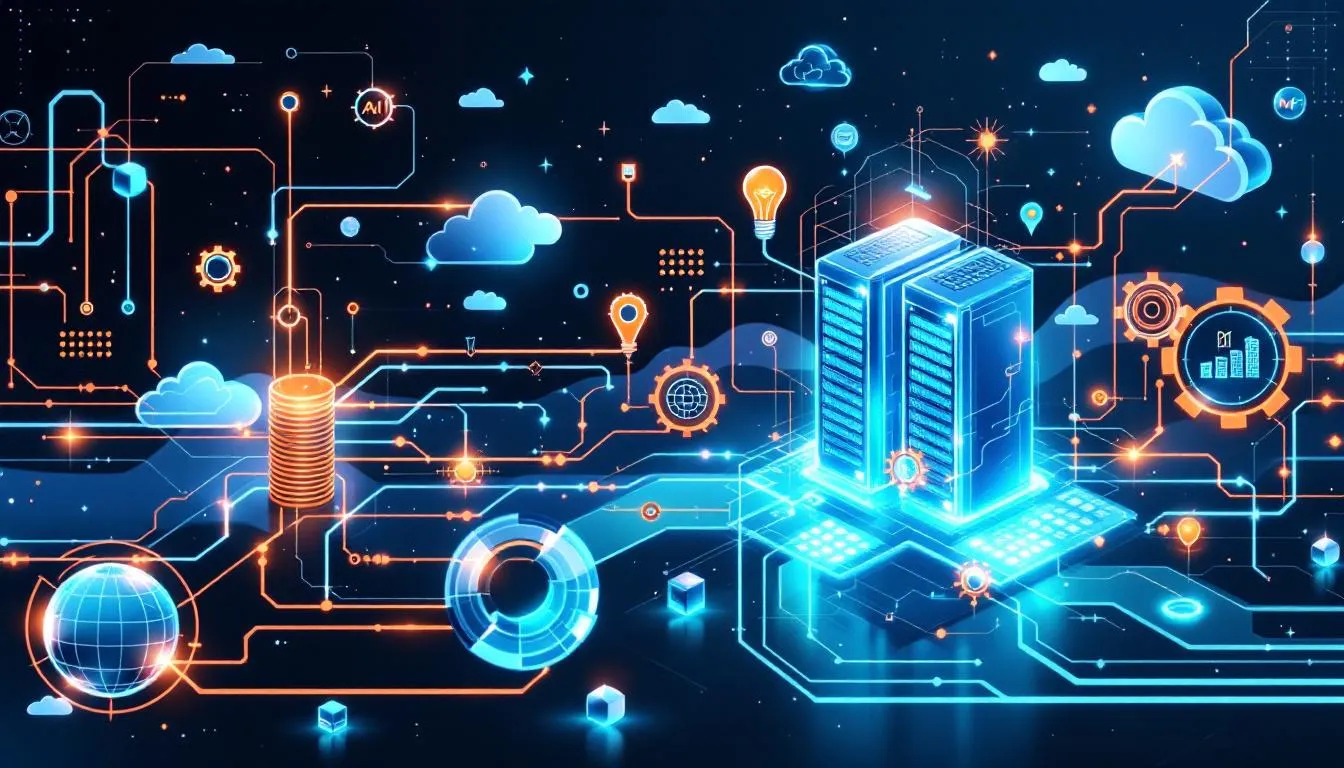
Data center research covers the latest trends, technology, and challenges. This article explores key insights, from the impact of AI on power demands to advancements in cooling and sustainable practices. Learn about the factors driving data center transformation and regional growth projections for 2025.
Key Takeaways
- The data center sector is undergoing significant change due to increased power demands driven by AI workloads, necessitating redesigns for enhanced computational efficiency.
- Liquid cooling technologies are becoming essential for data centers to meet high-performance computing requirements, demonstrating marked energy efficiency improvements over traditional cooling methods.
- Data center growth is region-specific, with the Americas leading in investments while the Asia-Pacific region shows strong potential due to rising digital service demands, contrasting with regulatory challenges in Europe, the Middle East, and Africa.
Understanding Data Center Trends
The data center sector is currently experiencing a transformative phase, driven by the rapid advancement of artificial intelligence (AI) and the increasing demands for computational power. AI advancements are not just a futuristic concept; they’re here, and they are reshaping the infrastructure requirements of data centers. The power demands for AI workloads are significantly higher, requiring approximately four times the power of traditional systems, which has led to a projected 165% increase in data center power demand by 2030.
AI technologies require more robust and powerful data center infrastructure due to significant investments. Investments focus on fundamentally redesigning data centers to handle the immense computational power and efficiency required by modern AI applications, rather than merely adding more machines. This surge in AI-related workloads is a primary driver for the unprecedented levels of data center construction we’re witnessing globally.
Advancements in semiconductor technology are also pivotal in this revolution. The rapid development of these technologies is enabling more efficient and powerful data processing capabilities, which is essential for supporting the next generation of AI applications. As AI continues to evolve, it will undoubtedly accelerate further advancements in data center infrastructure, creating new opportunities and challenges for the industry, particularly in the realm of machine learning.
Liquid cooling technologies are increasingly important. As data centers strive to meet the high-performance computing demands, liquid cooling offers up to 95% greater energy efficiency compared to traditional cooling methods. This is particularly crucial for supporting advancements in GPU technology, integral to AI workloads and high-performance computing. Integrating such cooling technologies is a necessity for the future of data centers.
Accessing Restricted Data for Research
Accessing restricted data is crucial for researchers dealing with sensitive information. Key points include:
- The Research Data Center (RDC) ensures participant confidentiality by not sharing personal identifiers and strictly adheres to protocols for data protection and regulatory compliance.
- Researchers interested in Medicare and Medicaid data can find valuable assistance through the Research Data Assistance Center (ResDAC).
- ResDAC provides resources such as online learning workshops, webinars, and knowledgebase articles for technical support.
After application approval, researchers must complete training related to data use and confidentiality and review output policies before publishing their research analysis products. The meticulous process ensures that all measures are taken to protect the data and maintain the integrity of the research.
Preparing Your Application
Preparing an application for restricted-use data access requires detailed attention to ensure compliance with regulations. Researchers must submit a comprehensive application outlining the need for access, including confidentiality documents. These documents typically consist of detailed proposals and confidentiality agreements, demonstrating the researcher’s commitment to data protection.
The approval process involves:
- Thoroughly reviewing submitted proposals to ensure all documentation is complete and adheres to required standards.
- Researchers completing training related to data use and confidentiality after submission.
- Ensuring researchers understand the protocols and responsibilities associated with proceeding to access restricted data.
This training is a critical step in ensuring researchers learn well-prepared to handle sensitive details information and discover.
Carefully following these guidelines can significantly enhance the chances of obtaining data access. Researchers are encouraged to meticulously respond to each step, from fill out the forms to completing the necessary training, to improve their chances of successful application.
Power Transmission Challenges in Data Center Development
Challenges related to power transmission significantly hinder data center development pipeline. As demand for more powerful data centers grows, the supporting infrastructure faces several bottlenecks:
- Lengthy timeline for expanding transmission lines, which can delay data center construction by years.
- Delays primarily due to the need for regulatory approvals.
- Securing easements, which are essential for developing high-capacity power lines.
Developing these power lines can take four years or longer, making it a critical factor in planning and executing new data center projects. Companies are re-evaluating their site selection criteria, prioritizing access to power and proximity to transmission infrastructure over traditional factors like land cost. This shift underscores the importance of reliable power availability in the successful deployment of new data centers.
Additionally, utilities’ approval processes for Power Purchase Agreements (PPAs) are becoming more stringent, involving detailed forms and fees to screen applicants. This selectiveness can further delay site development, adding complexity to the already challenging process of data center construction.
Advancements in Liquid Cooling
With growing demand for high-performance computing in data centers, advancements in liquid cooling technologies have become increasingly essential. Key points include:
- Liquid cooling is essential for high-density racks, where power and thermal management requirements are significantly higher.
- Many data centers are adopting a hybrid cooling approach.
- This hybrid approach typically utilizes approximately 70% liquid cooling and 30% air cooling to meet these demands.
Digital Realty’s data center in Paris, employing direct liquid cooling to enhance energy efficiency and support high-performance computing needs, is a notable example. This hybrid strategy enables data centers to adapt to diverse thermal management requirements, improving overall operational efficiency.
Besides hybrid cooling, immersion cooling is emerging as a transformative technology, enabling ultra-high-density equipment deployments. This method allows data centers to convert low-density facilities into environments capable of handling modern computing demands.
Evaporative cooling, using external air to efficiently draw heat away, presents another feasible alternative in specific deployment scenarios. These advancements in liquid cooling technologies are necessities for the future scalability and efficiency of data centers.
Sustainability in Data Centers
Sustainability in data centers is increasingly important as the industry seeks to reduce its environmental impact and improve energy efficiency. Key aspects include:
- Colocation providers facilitate access to renewable energy, enabling clients to meet their sustainability targets more effectively.
- The potential expansion of small modular reactors (SMRs) could substantially increase available green energy for data centers.
- This increase in green energy availability may influence the design and operational strategies of data centers.
Innovative practices like the implementation of DCI electrolysis for water preservation at the SIN10 facility in Singapore demonstrate the industry’s commitment to sustainability. This facility saves significant amounts of water monthly and reduces chemical usage in cooling operations.
These efforts highlight the broader trend towards sustainability in data centers, emphasizing the need for energy-efficient and environmentally friendly solutions to end.
Colocation Solutions for Sustainability
Colocation solutions enhance IT sustainability through hybrid cloud optimization, enabling more efficient use of resources. Optimizing hybrid cloud environments allows colocation providers to significantly improve energy efficiency, contributing to the overall sustainability of IT operations.
Beyond energy efficiency, colocation solutions provide access to renewable energy sources, allowing clients to reduce their carbon footprint and achieve their sustainability goals. The combined effects of hybrid cloud optimization and energy-efficient colocation contribute positively to IT sustainability efforts, making them a crucial component of modern data center strategies.
The scalable nature of colocation solutions offers significant opportunities for businesses looking to expand their IT infrastructure while maintaining a commitment to sustainability. Leveraging these solutions allows companies to balance their growth and environmental responsibilities, ensuring long-term success in a rapidly evolving digital landscape.
Regional Data Center Growth
Data center growth varies significantly by region across the globe. The Americas lead in data center investments, driven by high demand from technology companies and enterprises. Rising demand for cloud services and data storage fuels this surge in investment, making the region a hotspot for data center development.
In the Asia-Pacific (APAC) region, increased internet penetration and rapid growth of digital services drive significant investments in data centers. This region is expected to see higher data center capacity growth compared to others, highlighting its potential as a major player in the global data center market.
Meanwhile, the Europe, Middle East, and Africa (EMEA) markets face unique challenges such as energy shortages and stringent regulations impacting data center expansion. However, secondary markets are emerging as attractive locations due to energy availability and fewer regulatory obstacles, highlighting the importance of effective location strategies.
Many data centers aim to use renewable energy, targeting 75% of their energy from sustainable sources. New technologies like AI and edge computing influence growth patterns of data centers across different regions.
Case Studies in Data Center Innovation
Case studies in data center innovation provide valuable insights into how sustainable practices can lead to significant operational cost savings and environmental benefits. For instance, data centers implementing sustainable practices lower operational costs and significantly reduce their environmental footprint.
Many data centers now pursue green building certifications, aiming for at least LEED Silver for new constructions. This push for sustainability and certifications signals a shift towards environmentally responsible solutions that meet modern business needs.
These case studies highlight the practical benefits of sustainability, showcasing real-world examples of how data centers can achieve operational goals while positively contributing to the environment.
Contact Information for Research Support
Reliable contact information is crucial for researchers seeking assistance. The Research Data Assistance Center (ResDAC) provides a dedicated Assistance Desk operating Monday to Friday from 8 AM to 4 PM CT. Researchers can reach ResDAC’s Assistance Desk by calling 1-888-973-7322 or emailing [email protected]. ResDAC promises to acknowledge emails and phone calls within one business day, ensuring prompt support for research inquiries.
This reliable contact information is essential for obtaining necessary assistance for common data center research on this page, fostering a strong connection.
Summary
In summary, the data center industry is undergoing significant changes driven by advancements in AI, increasing power demands, and a growing focus on sustainability. The integration of liquid cooling technologies and the shift towards renewable energy sources are essential for meeting the high-performance computing needs and reducing environmental impact. Additionally, the regional growth patterns and innovative practices in data centers highlight the dynamic nature of this sector.
Moving forward, staying informed about these trends and innovations will be crucial for anyone involved in the data center industry. As we continue to push the boundaries of what our digital infrastructure can achieve, the importance of research, innovation, and sustainability cannot be overstated. Embracing these changes will not only drive the industry forward but also ensure a more sustainable and efficient future for data centers.
Frequently Asked Questions
What are the main factors driving the growth of data centers?
The growth of data centers is primarily driven by advancements in AI, rising compute demands, and substantial investments in AI technologies. This trend underscores the increasing reliance on data-driven solutions across various industries.
How can researchers access restricted data for their studies?
Researchers can access restricted data by submitting a detailed application that includes their proposals and confidentiality agreements, completing required training, and adhering to established data use guidelines.
What are the challenges in power transmission for data center development?
The challenges in power transmission for data center development encompass infrastructure bottlenecks, lengthy timelines for construction of transmission lines, and intricate regulatory approval processes. These obstacles can significantly impede the timely establishment of data center operations.
How is liquid cooling benefiting data centers?
Liquid cooling significantly enhances energy efficiency in data centers, particularly for high-density racks and high-performance computing, leading to optimal thermal management and reduced operational costs.
What are colocation solutions and how do they contribute to sustainability?
Colocation solutions contribute to sustainability by optimizing resource use through hybrid cloud deployment and investing in energy efficiency, thereby facilitating access to renewable energy sources. This approach significantly reduces the overall environmental impact of IT operations.





